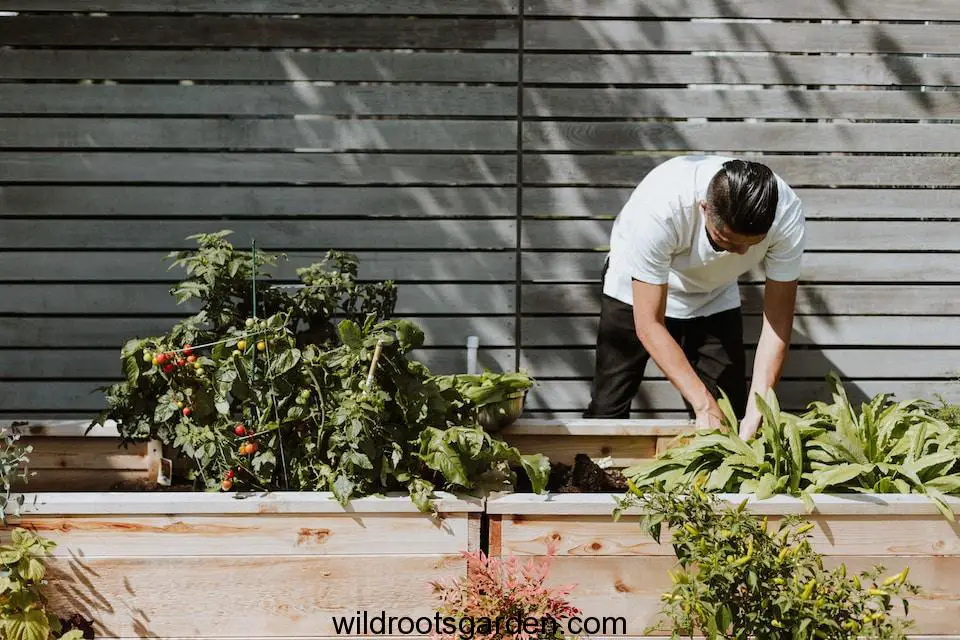To preparing soil for tomatoes, dig compost or manure deeply into your beds, ensuring to do so in an area approximately three feet in diameter and two feet deep, as roots will grow out and down. Use aged or composted manure when amending the soil in the springtime.
This will promote the growth of deep, loamy, well-drained soil with organic matter, which is preferred for successful tomato cultivation. By following these steps, you can create the optimal soil environment for your tomato plants, setting them up for a bountiful harvest.
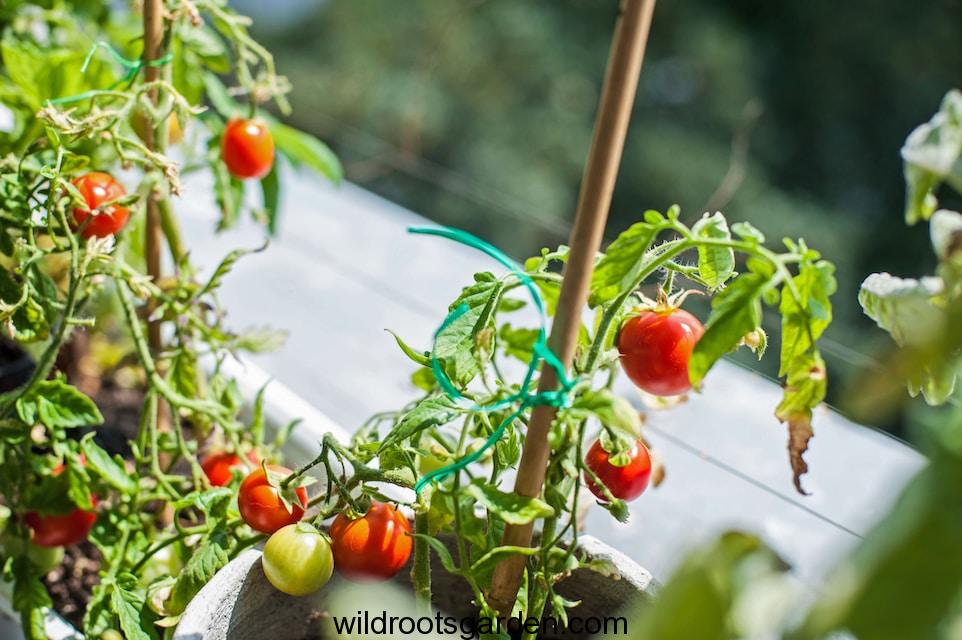
JUMP TO TOPIC
Understanding Tomato Soil Requirements
When it comes to growing healthy and productive tomatoes, one of the most crucial steps is preparing the soil. Understanding tomato soil requirements will ensure that your plants have the best possible foundation for growth. In this guide, we will dive into the preferred soil texture for tomatoes, the importance of organic matter, adjusting soil pH, and adding necessary nutrients.
Preferred Soil Texture For Tomatoes
Tomato plants can grow successfully on a range of soil textures, but deep, loamy, well-drained soil is preferred. Loam soil is a combination of sand, silt, and clay, providing a good balance of drainage and water retention. This type of soil allows roots to penetrate easily and access essential nutrients and moisture.
Importance Of Organic Matter
Organic matter is essential for healthy tomato plants, as it improves soil structure, enhances water-holding capacity, and provides nutrients. Adding organic matter, such as compost or well-rotted manure, to your tomato bed can significantly benefit plant growth. Organic matter also promotes the growth of beneficial soil microorganisms, which aid in nutrient uptake.
Adjusting Soil Ph
The pH level of your soil can affect the availability of nutrients to your tomato plants. Tomatoes prefer slightly acidic soil with a pH range of 6.0 to 6.8. If your soil pH falls outside this range, you may need to adjust it. Consider performing a soil test to determine the pH level and, if necessary, make amendments. Adding materials like sulfur or lime can help bring the soil pH into the desired range for optimum tomato growth.
Adding Necessary Nutrients
Tomato plants require various nutrients for healthy growth and fruit production. Some essential nutrients for tomatoes include nitrogen, phosphorus, potassium, calcium, and magnesium. Before planting your tomatoes, it is crucial to ensure that the soil has an adequate supply of these nutrients. Testing your soil can help identify any deficiencies and guide you in selecting the appropriate fertilizers or amendments to provide the necessary nutrients.
By understanding tomato soil requirements, you can create the ideal environment for your tomato plants to thrive. Focus on achieving the preferred soil texture, incorporating organic matter, adjusting soil pH, and adding necessary nutrients. Taking these steps will set the stage for healthy plants and a bountiful tomato harvest.
Preparing Soil For Tomato Planting
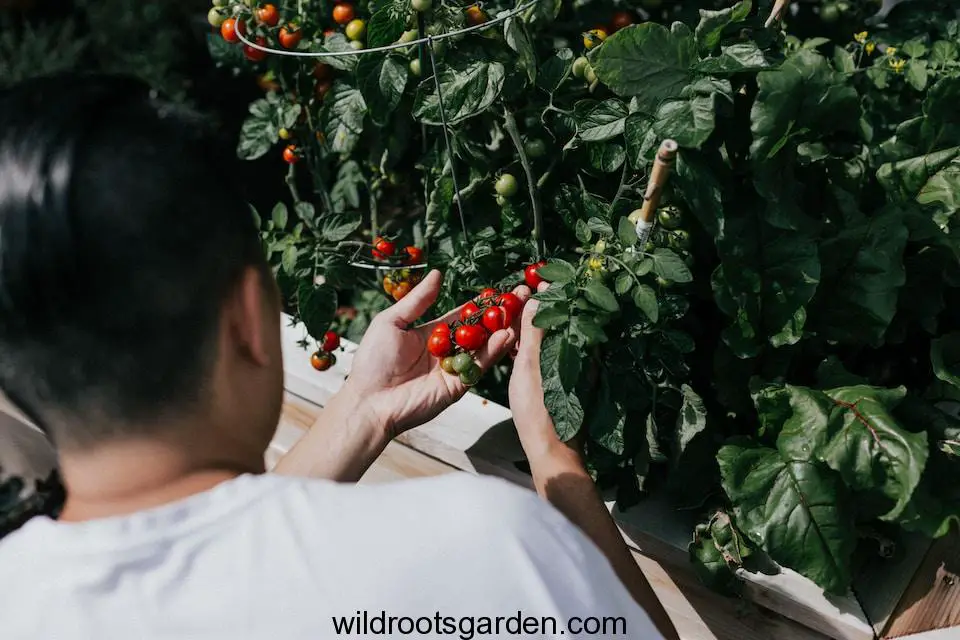
When it comes to growing juicy and flavorful tomatoes, one crucial step is to prepare the soil properly before planting. By taking the time to clear the planting site, incorporate compost or manure, and determine the right amendment area, you can ensure that your tomato plants will thrive and yield a bountiful harvest. Whether you are growing tomatoes in containers or raised beds, the following steps will guide you in preparing the perfect soil for your tomatoes.
Clearing The Planting Site
Before you begin planting your tomatoes, it is important to clear the planting site of any debris or weeds. By removing these obstructions, you create a clean and suitable environment for your tomato plants to grow. Clearing the site allows your plant’s roots to spread easily and access the necessary nutrients in the soil.
Digging Compost Or Manure Into The Soil
One effective way to improve the soil quality for tomato plants is by incorporating compost or manure. These organic amendments provide essential nutrients and improve the soil’s fertility. Digging compost or manure deeply into your beds ensures that the nutrients are evenly distributed and readily available to the plants. This step also helps improve the soil’s drainage and water retention capabilities.
Aging Or Composting Manure In The Spring
If you choose to use manure as an amendment for your tomato soil, it is best to age or compost it before incorporating it into the soil in the spring. Aging or composting the manure allows it to decompose fully and reduces the risk of introducing harmful bacteria or pathogens into the soil. This ensures that your tomato plants receive the benefits of the nutrients without any potential negative effects.
Determining The Size Of The Amendment Area
When preparing the soil for tomato planting, it is crucial to determine the size of the amendment area. For optimal growth, create an area about three feet in diameter and two feet deep for incorporating compost or manure. This size allows the roots of your tomato plants to expand and establish themselves properly. Remember to consider the space needed for the roots to grow outward and downward.
Growing Tomatoes In Containers Or Raised Beds
If you are growing tomatoes in containers or raised beds, there are additional considerations in preparing the soil. Choose a high-quality potting mix specifically formulated for vegetables or a well-balanced soil mix for raised beds. These mixes provide the necessary nutrients and good drainage for healthy tomato plant growth. Ensure that the containers or raised beds are of sufficient size to accommodate the root system and allow proper air circulation.
In conclusion, preparing the soil for tomato planting plays a crucial role in the success of your tomato plants. By clearing the planting site, incorporating compost or manure, determining the amendment area, and addressing the specific requirements of containers or raised beds, you set the foundation for healthy growth and a fruitful harvest. Take the time to give your tomatoes the optimal soil conditions they need, and you will be rewarded with delicious homegrown tomatoes.
Expert Tips For Successful Tomato Soil Preparation
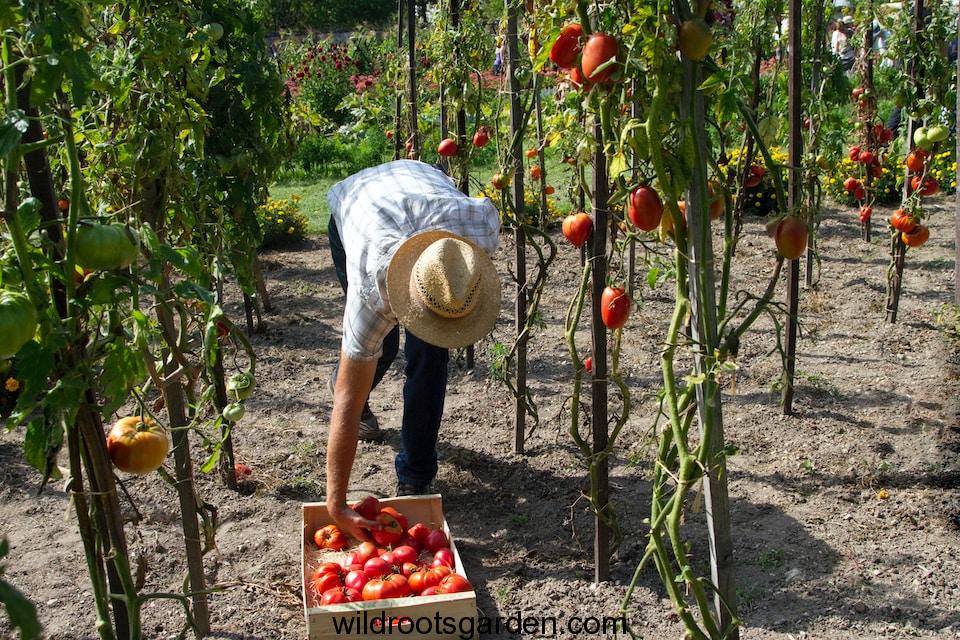
Preparing the soil for tomatoes is an essential step that can greatly impact the success of your tomato plants. To ensure optimal growth and a bountiful harvest, it is important to follow expert tips for preparing the soil. In this article, we will explore some tried and true methods that will help you create the ideal soil conditions for your tomatoes to thrive. Read on to discover the secrets of using the lasagna method, fertilizing for optimal nutrition, and choosing the best soil mix for raised beds.
Using The Lasagna Method
The lasagna method is a popular and effective technique for preparing soil in your tomato garden. This method involves layering organic materials such as leaves, grass clippings, and compost to create a nutrient-rich soil bed for your tomatoes. Follow these steps to implement the lasagna method:
- Clear the area where you plan to grow tomatoes.
- Layer a thick compost layer on the ground, about 2-4 inches deep.
- Add a layer of organic matter, such as leaves or grass clippings, about 2-3 inches deep.
- Repeat the compost and organic matter layers until you reach a depth of 12-18 inches.
- Water the bed thoroughly to help the layers settle and start decomposing.
- Wait for a few weeks before planting your tomatoes to allow the soil to mature and create a nutrient-rich environment for your plants.
Fertilizing Layer For Optimal Nutrition
Tomatoes are heavy feeders and require adequate nutrition to produce healthy fruits. A proper fertilizing layer will ensure that your plants receive the essential nutrients they need throughout the growing season. Consider these tips when fertilizing your tomato soil:
- Choose a balanced fertilizer with the right mix of nitrogen, phosphorus, and potassium. Look for fertilizers specifically formulated for tomatoes.
- Apply the fertilizer according to the instructions on the package. Generally, you should spread it evenly over the soil surface before planting and then side-dress the plants with additional fertilizers during the growing season.
- Monitor your plants for signs of nutrient deficiencies, such as yellowing leaves or stunted growth, and adjust your fertilization practices accordingly.
Choosing The Best Soil Mix For Raised Beds
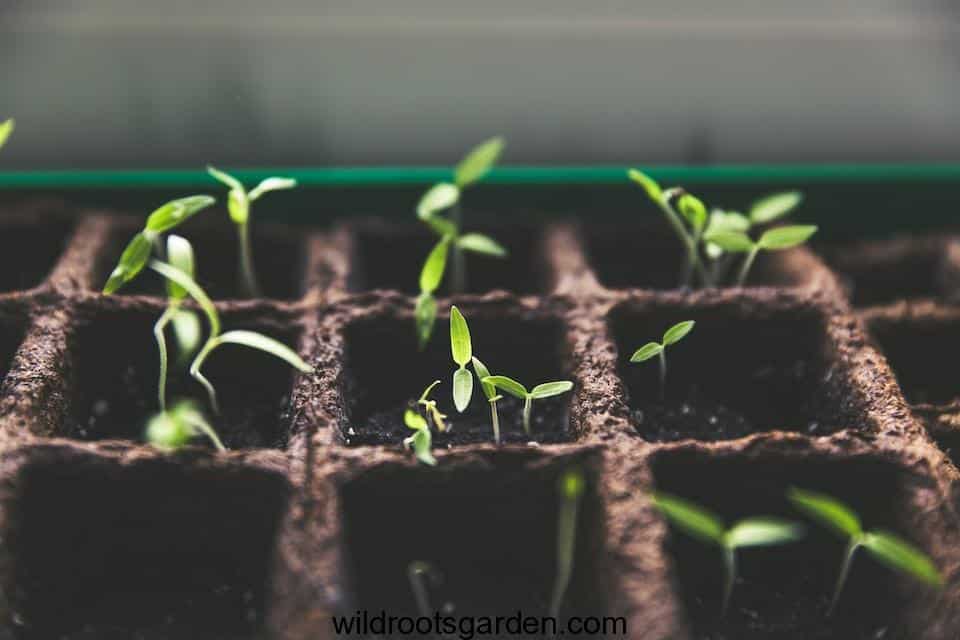
Raised beds offer several advantages for growing tomatoes, including better drainage, improved soil quality, and easier weed control. To make the most of your raised bed tomato garden, choose the best soil mix that provides optimal conditions for healthy plant growth:
| Recommended Soil Mix Components | Proportions |
| Garden soil | 50% |
| Compost | 30% |
| Peat moss | 20% |
Combine these components in a wheelbarrow or large container and mix thoroughly before filling your raised bed. This soil mix provides good drainage, nutrient retention, and a loose texture that allows roots to penetrate easily.
By implementing these expert tips for successful tomato soil preparation, you are setting your plants up for success. The lasagna method ensures a nutrient-rich soil bed, proper fertilization provides essential nutrients, and a well-selected soil mix for raised beds offers optimal growing conditions. Follow these guidelines, and your tomato plants will thank you with a healthy and abundant harvest.
Common Questions About Tomato Soil Preparation
When it comes to successfully growing tomatoes, proper soil preparation is essential. This includes adding the right amendments and ensuring the soil is of the ideal texture. In this section, we will address some common questions about tomato soil preparation to help you achieve a bountiful harvest.
What Should Be Added To The Soil Before Planting Tomatoes?
Before planting tomatoes, it is crucial to add the right amendments to the soil, ensuring it has the necessary nutrients and pH levels for optimal growth. Here are some recommended additions:
- Compost: Adding well-rotted compost to the soil enhances its fertility and improves its overall structure.
- Manure: Incorporating aged or composted manure into the soil provides essential organic matter and nutrients that tomatoes thrive on.
- Eggshells: Crushed eggshells can be sprinkled around tomato plants. They are rich in calcium, which helps prevent blossom end rot.
- Epsom salt: Sprinkling a small amount of Epsom salt around tomato plants can supply magnesium, which promotes healthy growth and enhances fruit production.
- Bone meal: Mixing bone meal into the soil can be beneficial, as it is a rich source of phosphorus, essential for vigorous root development and flower formation.
What Kind Of Soil Preparation Is Required For Tomatoes?
Tomatoes thrive in deep, loamy, and well-drained soil that is rich in organic matter. Here are some key steps for preparing the soil:
- Remove weeds: Clear the planting area of any weeds or grass that could compete with the tomatoes for nutrients and water.
- Loosen the soil: Use a garden fork or tiller to loosen the soil to a depth of at least 12 inches. This improves aeration, drainage, and root penetration.
- Add organic matter: Mix in well-rotted compost or aged manure to enrich the soil with nutrients and improve its structure.
- Avoid compacting the soil: After planting, avoid stepping on the soil to prevent compaction, which can hinder root development and water movement.
Are Coffee Grounds Beneficial For Tomato Plants?
Coffee grounds can be a beneficial addition to the soil for tomato plants. They provide organic matter and can improve soil fertility. Here are some ways to utilize coffee grounds:
- Add to compost: Coffee grounds can be included in your compost pile or bin. They help enhance the nutrient content of the compost.
- Use as a mulch: Spread a layer of coffee grounds around tomato plants, acting as a mulch that conserves soil moisture, suppresses weeds, and slowly releases nutrients over time.
- Mix with the soil: Before planting tomatoes, you can mix coffee grounds into the soil. They can improve drainage in heavy clay soils and increase organic matter in sandy soils.
It is important to note that coffee grounds are acidic, so if your soil is already acidic, it is advisable to use them sparingly or consider other amendments.
Frequently Asked Questions Of Preparing Soil For Tomatoes
What Should I Add To My Soil Before Planting Tomatoes?
Before planting tomatoes, add organic matter like compost or aged manure to your soil. Dig it in deeply, about three feet in diameter and two feet deep. This will help improve soil texture and provide nutrients for the plants.
What Kind Of Soil Preparation Is Required For Tomatoes?
To prepare soil for tomatoes, incorporate compost or aged manure deeply into the beds. Use loamy, well-drained soil with organic matter. Make sure to dig a three-foot diameter and two-foot deep area for roots to grow.
What Is The Best Soil Mix For Tomatoes?
The best soil mix for tomatoes is deep, loamy, well-drained soil with organic matter. Add compost or manure deeply into your beds and use aged or composted manure when amending the soil. Remember to dig in an area about three feet in diameter and two feet deep to allow roots to grow properly.
Are Coffee Grounds Good For Tomatoes?
Coffee grounds are good for tomatoes as they add organic matter to the soil and help improve drainage.
Conclusion
To ensure a bountiful tomato harvest, it is crucial to prepare the soil properly. Digging compost or manure deeply into your beds, preferably in a three feet diameter and two feet deep area, will provide the necessary nutrients for your plants.
Remember to use aged or composted manure when amending the soil in the springtime. By adhering to these soil preparation techniques, you are setting the stage for healthy tomato plants that will thrive and produce delicious fruit. Happy gardening!
Here are some excellent website resources for preparing soil for tomatoes, offering information for all levels of gardening experience:
General Soil Preparation:
- Old Farmer’s Almanac: https://www.farmersalmanac.com/how-to-grow-tomatoes – Provides concise and practical steps for soil preparation, including pH testing and amending techniques.
- Gardener’s Supply Company: https://www.weekand.com/home-garden/article/nutrients-tomato-plants-need-18044831.php – Offers a comprehensive guide on tomatoes, including detailed instructions for preparing soil based on location and existing soil types.
- National Gardening Association: https://www.tomatodirt.com/preparing-your-soil.html – Shares beginner-friendly tips on soil conditioning, drainage improvement, and choosing the right compost for tomatoes.
Tomato-Specific Resources:
- Bonnie Plants: https://bonnieplants.com/blogs/garden-fundamentals/planting-tomatoes-step-by-step – Offers a helpful chart on preparing soil for different tomato varieties and container gardening conditions.
- High Mowing Organic Seeds: https://www.wikihow.com/Prepare-the-Soil-for-Tomato-Plants – Features an in-depth guide on organic soil preparation methods and the benefits of using natural fertilizers for tomatoes.
- Burpee Seeds & Gardens: https://www.burpee.com/blog/encyclopedia__tomatoe-article.html – Provides a basic breakdown of soil preparation needs, including the ideal pH range and nutrients for optimal tomato growth.
Video Tutorials:
- Gardening at Home: https://m.youtube.com/watch?v=0oZhRSoHCpA – This video guide demonstrates the soil preparation process, from testing pH to adding compost and building raised beds.
- Epic Gardening: https://m.youtube.com/watch?v=496lZjgQZ-4 – This video offers visual instructions on raised bed construction and soil amendments specifically for tomatoes.
- Farmyard Friends: https://www.youtube.com/watch?v=G_MzVawzqGk – This video provides a quick and clear overview of essential soil preparation steps for growing healthy tomatoes.
Bonus Resources:
- USDA Hardiness Zone Map: https://planthardiness.ars.usda.gov/ – Helps you determine your gardening zone to choose the best tomato varieties and adjust soil preparation methods accordingly.
- Online Soil Testing Services: Several online services like “Luster Leaf” and “SoilKit” offer convenient soil testing kits and analysis reports to guide your specific soil amendments.
Remember, the best approach to preparing soil for tomatoes depends on your location, existing soil conditions, and preferred gardening methods. Utilize these resources to tailor your soil preparation for optimal tomato success!

